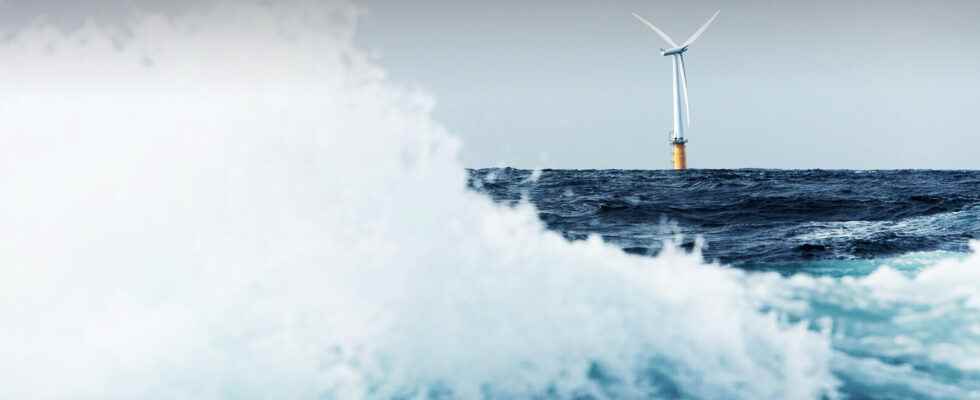History books will undoubtedly retain climate crises and the challenges of energy transition to describe our time. While political battles rage on one side, engineers continue their tireless work to evolve the energy sector.
It has been some time since the first offshore wind turbine produced its very first kWh. Taking advantage of the stronger and more regular winds of the marine climate, this technology is an essential asset in the production of less carbon-intensive, but industrially viable energy. One of the latest innovations in this area is the floating wind turbine, of which the Hywind Scotland wind farm off the coast of Scotland was the first commercial-scale pilot project.
Good results…
This wind farm, operated by Norwegian giant Equinor, consists of five floating wind turbines capable of powering 34,000 homes in the UK. With a height, from the base to the turbine, of 255 meters (not far from an Eiffel Tower), they benefit from the experience acquired with offshore oil and gas platforms, which can be deployed in more varied geographical conditions. . Thus, with this technology, it is possible to install wind farms where the seabed is deeper, but where the climate allows a higher and more stable yield.
This was at least the objective displayed by Equinor, which claims to have achieved it as the Hywind Scotland site celebrates its fifth anniversary. It would be the most efficient offshore wind farm in the world, with a load factor of 54%. This represents the ratio between the actual production over a given period and the energy that could have been produced if the park had operated 24 hours a day. For comparison, in 2019, offshore in Europe recorded a factor average load of 39%.
… in more extreme conditions
The company not only shares the wind farm’s production results, but also its feedback. Indeed, if it was necessary to innovate to make wind turbines work properly when subjected to a harsher environment, it will also have been necessary to train technicians capable of working there smoothly.
Park Superintendent William Munn explains:
Operating the Hywind Scotland project over the past five years has made Equinor aware of some of the unique challenges associated with a floating wind farm, and the benefits to be had if we are successful.
Due to its location and the harsh weather conditions it encounters, Hywind Scotland is exposed to higher wind speeds than typically seen on a fixed bottom wind farm, but must also withstand large waves , while continuing to produce energy with wave heights of 10 meters.
Due to the environment, unique operating and maintenance methods were required, such as the use of a high-performance crew transfer vessel capable of continuing operations in more difficult transfer conditions than the norm.
Projects of this type are being developed elsewhere in the world. One of them, installed off the coast of Japan, has already successfully endured three typhoons, testifying to the resilience of this technique in a changing climate. Without being a revolutionary response to current challenges, the floating wind turbine presents itself as a good additional tool in an ever more complex energy context.
Source : Elektrek

2